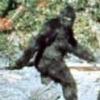It is not clear to me if hunting season with guns (which started in Sept. 16 in CA in 2023) affects the number of sightings reports from folks who go outdoors to camp, hike, ride horses, or fish.
I am not a hunter, so I don't know if hunting season starts the same date every year or whether it is the same in other states like Washington and Oregon.
Nonetheless, I decided to look at data from the SSR database and examine the % decline in reports from non-hunting season (July and August) to hunting season (September and October). And then to compare that decline to the expected seasonal decline in recreational visitors to National Forests and Parks.
In CA, archery hunting season starts the 3rd Saturday of August, but I will assume it has less of an impact than hunting with guns.
The table below shows the number of BFRO Class A Reports in CA, OR, and WA while camping, fishing, hiking, and horseback riding (the outdoor activities that I assumed were in National Forests or Parks). I assumed that July and August were non-hunting months and added their cases. I assumed that September and October were hunting months and added those cases. Then I calculated the % decline. In CA, the decline in Class A reports was 54%, while in OR and WA it was 38% and 18% respectively. Nonetheless, once we add the hunting reports (which are also outdoors), the CA decline is only 34%, while OR reports increase by 5% and WA reports increase by 42%.
The BFRO Class A table excludes reports from the following activities: ATV, driving, 4-wheeling, boating/kayaking/canoeing , normal activity at home, playing outside house, swimming, farming, tending livestock and other.
Given that the number of visitors to the Western National Forests and Parks decline in the Fall compared to the Summer, we need to compare seasonal visitor declines to the declines in Class A reports between seasons (to remove or adjust for that effect).
I used statistics from the National Park Service website to estimate the decline in recreational visitors between July-August and September-October.
The table below shows the 2022 statistics for 5 National Parks.
While each park is unique and results in different % reduction in visitors, they all show a reduction ranging from 12% for Yosemite NP to 55% to Olympic NP. The average decline in visitors is about 40%.
If we expect a normal seasonal decline in recreational visitors of about 40% (or a range from 10% to 55%), then the results shown on the BFRO Class A reports table suggest no negative impact from hunters but instead a positive impact from additional sightings from hunters.
This is counter-intuitive, because I thought having hunters with guns in the wilderness would scare the sasquatches away from people and reduce the number of encounters.
But it appears that the large number of hunters during the hunting season yields more outdoor encounters.
However, the number of encounters for those who are not hunting but just camping, hiking, fishing or horseback riding stays about the same (as a % of those visiting) and their decline in reports is consistent with the decline in visitors during the fall.
This might suggest that it does not matter if it is hunting season or not for a Class A BFRO report and what matters is the number of people going into the forest/wilderness area.
What I have noticed when going to the same hotspots in July/August vs. Sept/Oct, is that when hunting season starts there are more people camping and looking for deer and the dispersed camping sites are more crowded.
Nonetheless, I don't know if the hunting crowd will increase or decrease the odds of a BF sighting. My gut feeling tells me that it will decrease the odds, but the stats suggest that it does not matter.
Source of NP visitor data by month and year:
https://irma.nps.gov/Stats/SSRSReports/Park Specific Reports/Summary of Visitor Use By Month and Year (1979 - Last Calendar Year)?RptYears=2014,2013,2012,2011,2010,2009,2008,2007,2006,2005,2004,2003,2002,2001,2000,1999,1998,1997,1996,1995,1994,1993,1992,1991,1990,1989,1988,1987,1986,1985,1984,1983,1982,1981,1980,1979&Park=CRLA



